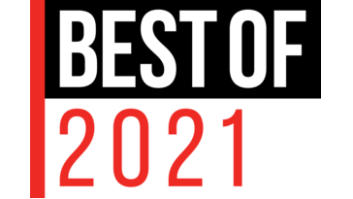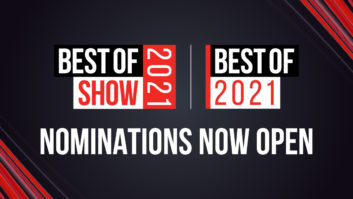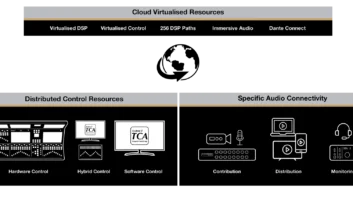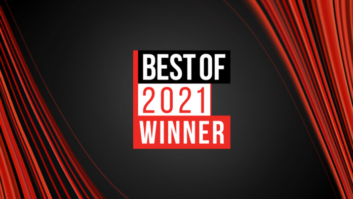As we head towards 2021 with anticipation of escaping the craziness of 2020, Dan Castles, CEO of Telestream, shares some insights and predictions on the year ahead for the media and entertainment industry.
A Year to Remember
I don’t need to tell you much about 2020 that you don’t already know. I will share that with all the devastation brought to the world by Covid-19, and a US election season like nothing we could have imagined, we’ve learned a lot about each other for better or worse. For companies in our industry, it’s been a similar situation. Some have fared much better than others. Some have survived by making very tough decisions which in the long run will make them stronger as we come out of Covid. I’m still amazed at how quickly companies were able to respond, despite all odds, and keep some semblance of normalcy. Shows continued to air, critical news and information got out there. And it’s no surprise that with so many viewers isolating themselves, the appetite for entertainment (binge watching) grew enormously and continues to grow now even now. This created even more relentless competition for viewers’ attention, forcing media companies to streamline operations and quickly adapt their processes with many people working from home. This strain soon exposed the weakest links in the chain. If you didn’t have an infrastructure for remote working, or a business continuity plan in place, it showed. The pandemic created a different type of disaster in terms of disaster recovery than many businesses had planned for. Still, things got done and hard lessons were learned. Looking to 2021, I think we can all agree that we can only go up from here!
2021 and Pressing the Reset Button
Much of what we’ll see in 2021 was already in play, but if 2020 did anything positive, it was to accelerate the pace of evolution in key areas. The Cloud is always a continuous point of discussion and I could say “I foresee more rapid Cloud adoption in 2021” and that would be easy to get right, but it’s more nuanced than that. Telestream placed a bet on the Cloud several years ago and we’ve been evolving our strategy in that direction ever since. Most importantly, and underlying that strategy, is the evolution of how people work together. Remote working was a good idea long before the pandemic arrived because we don’t always need people and systems in the same building and we certainly don’t need to send giant teams and supporting infrastructure to every live event. The pandemic has shown us that people don’t necessarily need to sit in cubicles from 9 to 5 in order to be valuable contributors. 2021 is an opportunity to press the reset button and work smarter and more efficiently. For some companies, this might be a do or die proposition.
Cloud Adoption Accelerates
The pandemic has hastened the onset of remote workflows that were already beginning or even well established for some companies. Remote workflows almost exclusively make use of the Cloud in some form. And while many still associate the Cloud with media storage, it’s the ‘Cloud compute’ part of the equation that really changes the game. The compute power in the Cloud allows even the smallest companies to have access to the same resources, flexibility, and scalable business models as the larger players. Using the Cloud in this way has the potential to “float all boats” in regard to any size and budget production being able to benefit from ‘pay as you go’ media processing and distribution workflows. More businesses are going to take a close look at the Cloud in 2021, and continued remote working will drive that.
The security of valuable media assets is a big issue for many content owners, but the truth is that it’s hard to find a more secure ecosystem than the Cloud. Cloud-based workflows are inherently more secure than on-premises equivalents because Cloud-based production and distribution can utilise the robust security architecture that has been purpose-built for the Cloud and is monitored 24/7 by teams of security experts. Banks and other financial organisations know this, and everyone who uses tools from Google or Microsoft or Salesforce depends on that security every day. I think 2021 can be the year that the M&E industry makes great strides in accepting that security is not an issue in the Cloud.
Remote Workflows are Here to Stay
In 2021, I believe we’ll see plenty of teams continuing to work remotely as an ongoing, managed offering to employees. In this context, the Cloud will be examined for how to accomplish this while at the same time, naturally, there will be continued focus on the economics of Cloud-based computing for heavy lifting media workflows. A key component of sustainable remote workflows is not to move the media. If someone needs to QC a programme master remotely, waiting two hours for it to download is costly and inefficient. This is one of the reasons that we developed our new GLIM Media Player that allows stakeholders to play full resolution media files remotely from anywhere they have an internet connection. Even as vaccines are made available and the pandemic subsides, if companies can save money on travel expenses by not flying every single operator, engineer and supporting equipment to events, they are going to want to do it.
OTT Advertising Needs Help
Monetisation challenges continue to plague the distributors of content via OTT and ads are at the very heart of the issue. Despite the revenue implications of ads not playing properly, the negative impacts on brands can be incalculable. 2021 will be an important year for the industry to solve ad problems in the OTT pipeline and end viewer frustration with ads being inserted at the wrong time or being played repeatedly. This will start with comprehensive monitoring and quality control processes that enable broadcasters and content owners to know where the problems are. We’ve been working hard on our new Stream Monitoring software (Xloud based) to help address the need for ad markers and support the automation of this process while enhancing the ability to detect errors throughout the distribution chain.
It’s also critical that content owners get live event content accessible to viewers as soon as possible to maximise advertising revenue. Viewers expect things to be available immediately, and the industry needs to deliver on that expectation. The technology is there, we just need to use it.
Supplier Consolidation
There will be an acceleration in consolidation for the simple fact that so many companies have been impacted by Covid, their survival is based on finding a new home. You have motivated buyers who expect favourable pricing and motivated sellers who need to get a deal done. There will be management changes as new energies are needed in many cases to deal with the new reality their particular company is facing. There will be more downsizing as we go into the new year from the simple reality of how 2020 will end for many. Company cultures will be challenged, and employee trust tested to the max. The cold, hard truth is there are financial reverberations from 2020 and Covid that will take all of 2021 and beyond to overcome.
Tradeshows
In our industry, the two primary trade shows are positioned at the end of Q3 and the start of Q4 this year. Getting any traction at either show will be very dependent on the successful rollout of a vaccine. When will companies feel comfortable enough to fly a large number of staff to join 30-50 thousand people in an enclosed space for almost a week? My prediction is that we won’t know until June if these two shows have any chance of being remotely relevant/effective or will even take place. As we move into 2022, it will be interesting to see what the “bounce back” looks like for these tradeshows as all suppliers have had to get creative on how to message themselves and their product announcements via new methods for a fraction of what a trade show historically costs. Will vendors revert back to old habits or will there be a “new norm” with trade shows going forward? I suspect over the next several years, tradeshows will regain some traction and for many exhibitors, the booth size may return to former sizes, but the ultimate customer attendance at these shows will be down at least 25 per cent from the most recent pre-Covid levels. And this is beyond the 2021 shows, where attendance will be marginal at best.







